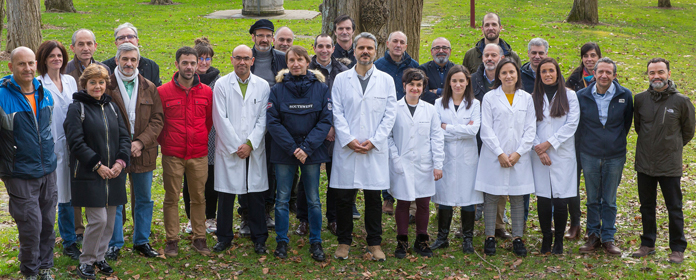The high school of research in Biodiversity and Environment of the University of Navarra is born.
With 35 researchers, the center will add to the scientific knowledge dissemination , the partnership and the provision of services to companies.

The School of Sciences of the University of Navarra has created the high school of research in Biodiversity and Environmentto address questions core topic about nature and the future of the planet. The center wants to contribute to making Navarra a reference in the scientific research and knowledge dissemination in this field. Among its objectives is also to provide industry with the results of its programs of study, offer services and collaborate with public and private entities that contribute to achieving a sustainable environment.
"Navarra is the ideal framework to carry out nationally representative programs of study ," says Jesús Miguel Santamaría, director scientific high school. The board board is also made up of professors Ignacio López Goñi, José María García-Mina, Rafael Miranda and Inmaculada Pascual.
The high school is organized in four transversal lines of research : monitoring and management of ecosystems (establishing methods for measuring data in natural, agricultural, urban and industrial environments); impacts of human activity on the environment; global change and biodiversity (programs of study aimed at predicting future changes in ecosystems); and environmental communication and Education (area of work linked to the activity of the Science Museum).
These lines will be articulated through the Departments of Environmental Biology, Chemistry, History, Art History and Geography, Communication and Construction, Facilities and Structures; five groups of research in different areas and the Science Museum. The center initially brings together a total of 35 researchers, who will be joined by experts from other Schools such as Law and Economics.
"To effectively address environmental problems it is necessary to form interdisciplinary teams, since the processes that occur in nature are interconnected and never operate in isolation," explains Full Professor Jesús Miguel Santamaría. "Understanding problems such as climate change, environmental pollution or biodiversity loss requires applying a approach multidisciplinary to research, constituting teams of professionals from different areas capable of providing consensual and comprehensive solutions."
Promote environmental Education and citizen participation.The center aims to be a point of meeting between the university research and the administration, companies, managers and the international community. "But, above all," explains Santamaría, "it seeks to promote environmental Education and citizen participation, transmitting positive messages based on science that help to understand the need to invest in research and to apply determined policies to guarantee the sustainability of the planet.
Although researchers at high school are involved in numerous international projects, a significant part of their activities will continue to be carried out on a regional scale, thus helping Navarra to become a reference in the environmental field. "Our region is characterized by being one of the Spanish communities with the greatest biological richness, where three biogeographical zones converge," Santamaría emphasizes. "Navarra is an ideal environment to host a high school dedicated to research and provide data to help preserve its extraordinary natural heritage."
The creation of the high school of Biodiversity and Environment reinforces the commitment of the University of Navarra and the School of Sciences for the quality research and the scientific knowledge dissemination . In these areas of work during the last ten years (2009-2018), 617 scientific articles have been published and 51 doctoral thesis have been defended. 129 research projects (regional, national or international) have been obtained and the funding received exceeds 12 million euros.




